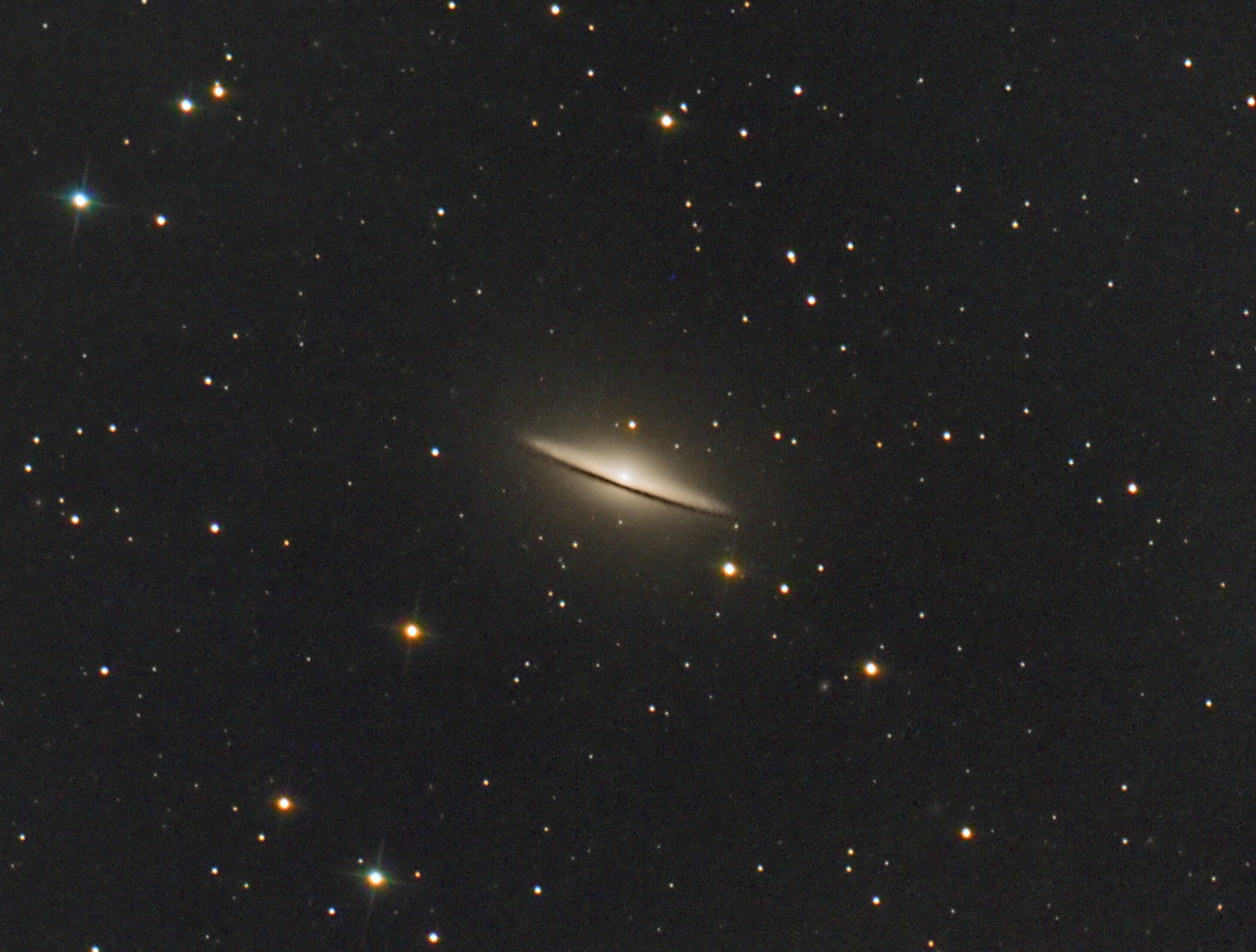
Why Do Bright Stars Look Bigger?
If stars appear as mere points, as we’re always told, why are some stars big and some small in every image I’ve ever seen? Photography does strange things to stars. In fact, the sky on photographs looks rather different from the sky we see visually (S&T: June 2004, page 128).…

Where was the Big Bang located?
The commonest misconception about the Big Bang is that it happened at some particular spot in preexisting empty space.

Should you use light-years or parsecs for astronomical distance?
You give astronomical distances beyond the solar system in light-years, but professional astronomy papers use parsecs. Which is preferable? Light-years, no question! Here’s how I see it. The parsec (which equals 3.26 light-years) is defined as the distance at which a star will show an annual parallax of one arcsecond.…

What's the most distant object I can see with my telescope?
Is there a more distant object than NGC 4889 (Caldwell 35) that I can see with my 5-inch reflector? Yes, by a factor of 7! Think quasars. NGC 4889 is a member of the Coma Galaxy Cluster, which lies about 300 million light-years away. But the quasar 3C 273 is…
What Are Celestial Coordinates?
"Right ascension" and "declination" tell you where your telescope is pointed in the sky. But what do they really mean?

Do error bars have to overlap the line of best fit?
You often print graphs in which data points have error bars that are too short. About a third of the error bars don’t overlap the line of best fit. So which is wrong? Neither! When it comes to describing statistical uncertainty, such as drawing an error bar, the usual measure…

Why are the stars so far away?
Why are the stars so far away? That question has a real answer: Because if the stars were much closer, Earth wouldn’t exist, and we wouldn’t be here to ask.

Focal Ratio vs. Aperture: What Makes an Object Look Brighter Through a Telescope?
How can you make a star or deep-sky object, such as galaxies or nebulae, look brighter? The total brightness of a star or other object is determined by the telescope’s aperture, also called light grasp. The focal ratio (also called f/number, that is, the focal length divided by the aperture)…

Time In the Sky and the Amateur Astronomer
While civil time is based on official edit, the celestial clockwork follows its own rhythms.
Observing from the City
With the stars increasing being lost amid the light pollution of our urban areas, is there no hope for an astronomer in the city? Fortunately, there's still a lot of observing that can be done.
How do I clean eyepiece lenses?
Very carefully — and not often! Here are some tips to help you keep your optics clean.

An Observatory with Sails
After working at Sky & Telescope for nearly a decade I got the chance to build the observatory I'd always wanted.

DIY: Astronomy Projects & Guidance
DIY Dew Heater
With just a little electrical know-how you can make an antidew heater that suits your scope.
R and T Coronae Borealis: Two Stellar Opposites
One is usually bright but fades unexpectedly; one is almost always faint but brightens unexpectedly. Check them out with binoculars.

Accurate Polar Alignment with Your Telescope
Long-exposure astrophotography requires an accurately aligned equatorial mount.

Choosing Your Astronomy Equipment
A Pupil Primer: How Big Should a Telescope's Exit Pupil Be?
Image brightness, magnification, and why the old ideal of a 7-millimeter exit pupil is not so ideal at all.

Observing the Sun Safely: Sunspots, Faculae, and Flares
The surface of the Sun is a dynamic, living place that can change unpredictably from day to day.

Observing Secrets of Deep-Sky Objects Revealed
Here's how to hone your galaxy-hunting skills — and what to expect at the eyepiece.

Light Pollution In The Night Sky
Light pollution has become so pervasive that it compromises the view of the universe for an estimated 90 percent of Americans.
Watch the Re-Entry of Stardust
Late Saturday night, January 14-15, skywatchers in much of the American West can watch for a dazzling artificial "meteor."
